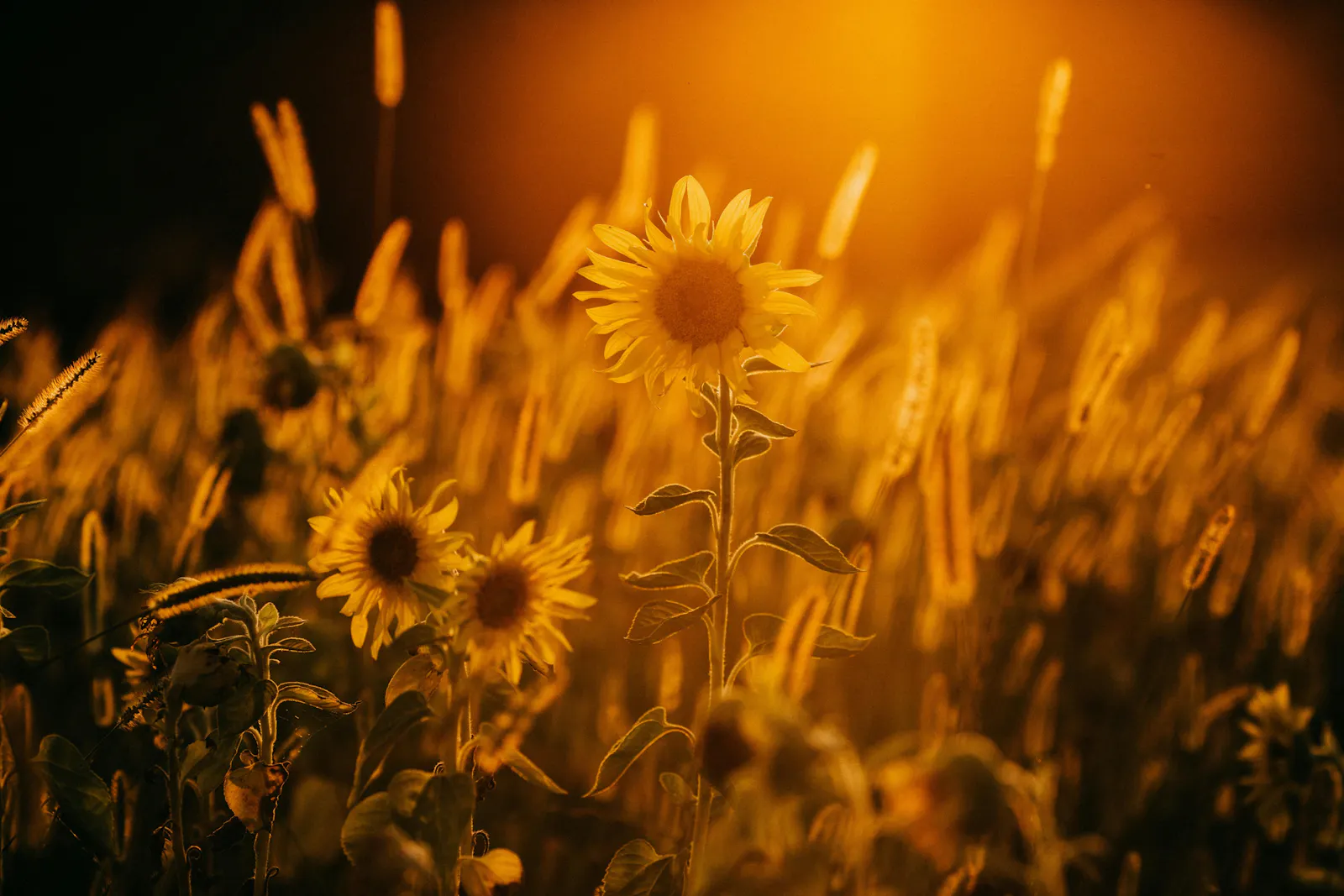
Helianthus
Temporal range: Eocene-recent[1] (S'ouvre dans une nouvelle fenêtre)
 Common sunflower (S'ouvre dans une nouvelle fenêtre)Scientific classification (S'ouvre dans une nouvelle fenêtre)
Common sunflower (S'ouvre dans une nouvelle fenêtre)Scientific classification (S'ouvre dans une nouvelle fenêtre)![]() Kingdom:Plantae (S'ouvre dans une nouvelle fenêtre)Clade:Tracheophytes (S'ouvre dans une nouvelle fenêtre)Clade:Angiosperms (S'ouvre dans une nouvelle fenêtre)Clade:Eudicots (S'ouvre dans une nouvelle fenêtre)Clade:Asterids (S'ouvre dans une nouvelle fenêtre)Order:Asterales (S'ouvre dans une nouvelle fenêtre)Family:Asteraceae (S'ouvre dans une nouvelle fenêtre)Subfamily:Asteroideae (S'ouvre dans une nouvelle fenêtre)Supertribe:Helianthodae (S'ouvre dans une nouvelle fenêtre)Tribe:Heliantheae (S'ouvre dans une nouvelle fenêtre)Genus:Helianthus
Kingdom:Plantae (S'ouvre dans une nouvelle fenêtre)Clade:Tracheophytes (S'ouvre dans une nouvelle fenêtre)Clade:Angiosperms (S'ouvre dans une nouvelle fenêtre)Clade:Eudicots (S'ouvre dans une nouvelle fenêtre)Clade:Asterids (S'ouvre dans une nouvelle fenêtre)Order:Asterales (S'ouvre dans une nouvelle fenêtre)Family:Asteraceae (S'ouvre dans une nouvelle fenêtre)Subfamily:Asteroideae (S'ouvre dans une nouvelle fenêtre)Supertribe:Helianthodae (S'ouvre dans une nouvelle fenêtre)Tribe:Heliantheae (S'ouvre dans une nouvelle fenêtre)Genus:Helianthus
L. (S'ouvre dans une nouvelle fenêtre)[2] (S'ouvre dans une nouvelle fenêtre)Synonyms (S'ouvre dans une nouvelle fenêtre)[2] (S'ouvre dans une nouvelle fenêtre)
Harpalium (Cass.) Cass.
Helianthus (/ˌhiːliˈænθəs/ (S'ouvre dans une nouvelle fenêtre))[3] (S'ouvre dans une nouvelle fenêtre) is a genus (S'ouvre dans une nouvelle fenêtre) comprising about 70 species (S'ouvre dans une nouvelle fenêtre) of annual and perennial flowering plants (S'ouvre dans une nouvelle fenêtre) in the daisy family Asteraceae (S'ouvre dans une nouvelle fenêtre).[4] (S'ouvre dans une nouvelle fenêtre)[5] (S'ouvre dans une nouvelle fenêtre) Except for three South American (S'ouvre dans une nouvelle fenêtre) species, the species of Helianthus are native to North America (S'ouvre dans une nouvelle fenêtre) and Central America (S'ouvre dans une nouvelle fenêtre). The common names "sunflower" and "common sunflower" typically refer to the popular annual species Helianthus annuus (S'ouvre dans une nouvelle fenêtre), whose round flower heads in combination with the ligules (S'ouvre dans une nouvelle fenêtre) look like the sun.[6] (S'ouvre dans une nouvelle fenêtre)This and other species, notably Jerusalem artichoke (S'ouvre dans une nouvelle fenêtre) (H. tuberosus), are cultivated in temperate (S'ouvre dans une nouvelle fenêtre) regions and some tropical (S'ouvre dans une nouvelle fenêtre) regions as food crops for humans, cattle, and poultry, and as ornamental plants.[7] (S'ouvre dans une nouvelle fenêtre) The species H. annuus typically grows during the summer and into early fall, with the peak growth season being mid-summer.[8] (S'ouvre dans une nouvelle fenêtre)
Several perennial (S'ouvre dans une nouvelle fenêtre) Helianthus species are grown in gardens, but have a tendency to spread rapidly and can become aggressive. The whorled sunflower, Helianthus verticillatus, was listed as an endangered (S'ouvre dans une nouvelle fenêtre) species in 2014 when the U.S. Fish and Wildlife Service (S'ouvre dans une nouvelle fenêtre) issued a final rule protecting it under the Endangered Species Act (S'ouvre dans une nouvelle fenêtre). The primary threats are industrial forestry (S'ouvre dans une nouvelle fenêtre) and pine (S'ouvre dans une nouvelle fenêtre) plantations in Alabama, Georgia, and Tennessee. They grow to 1.8 m (6 ft) and are primarily found in woodlands, adjacent to creeks and moist, prairie-like areas.[9] (S'ouvre dans une nouvelle fenêtre)